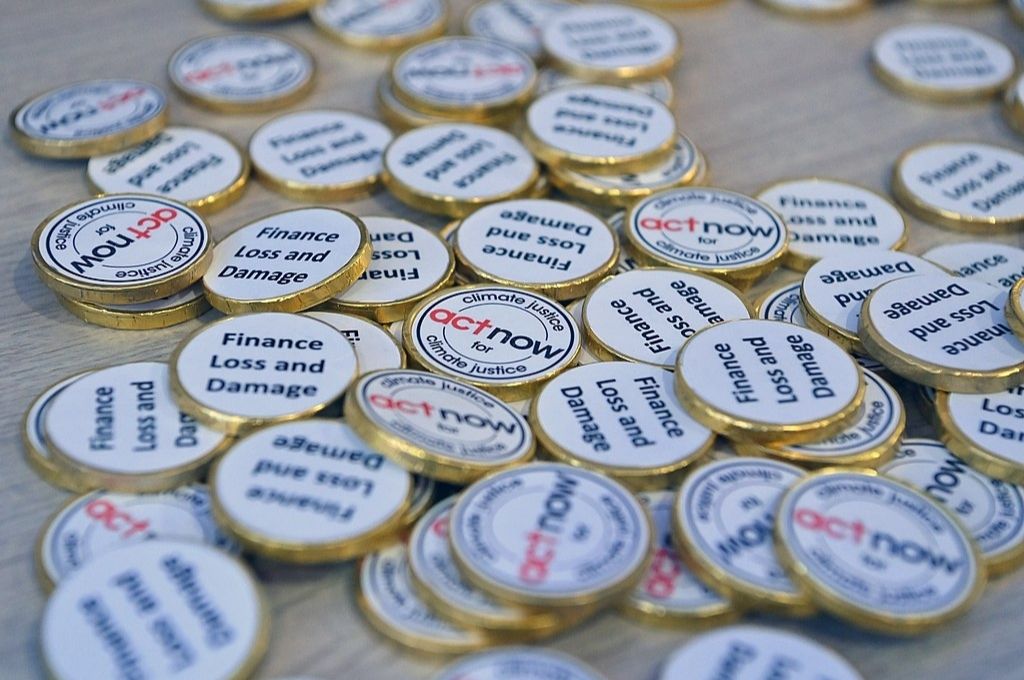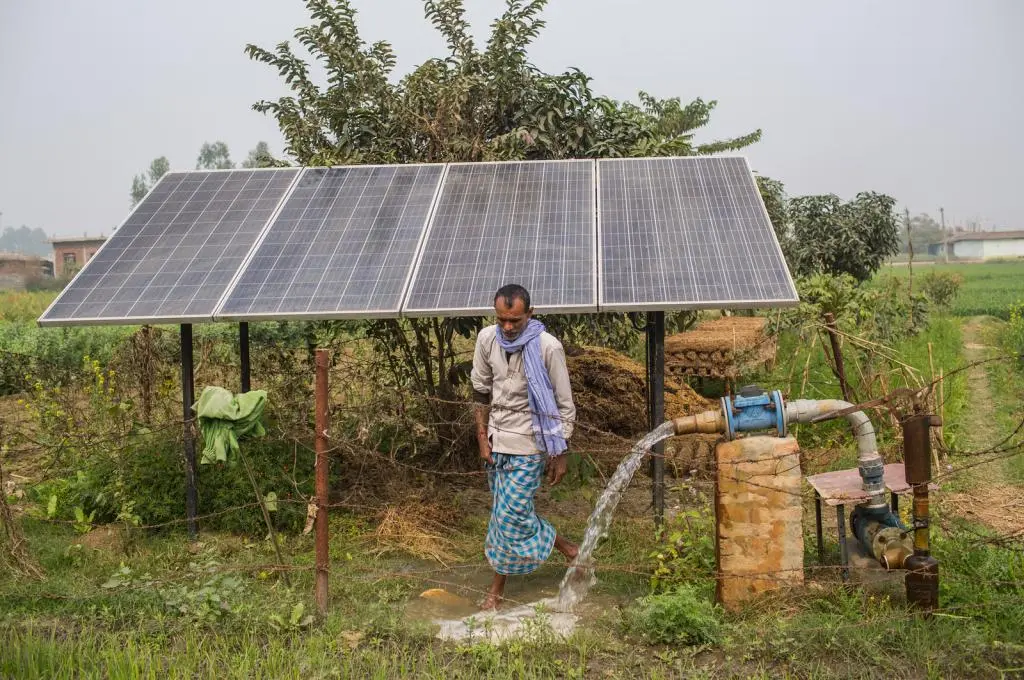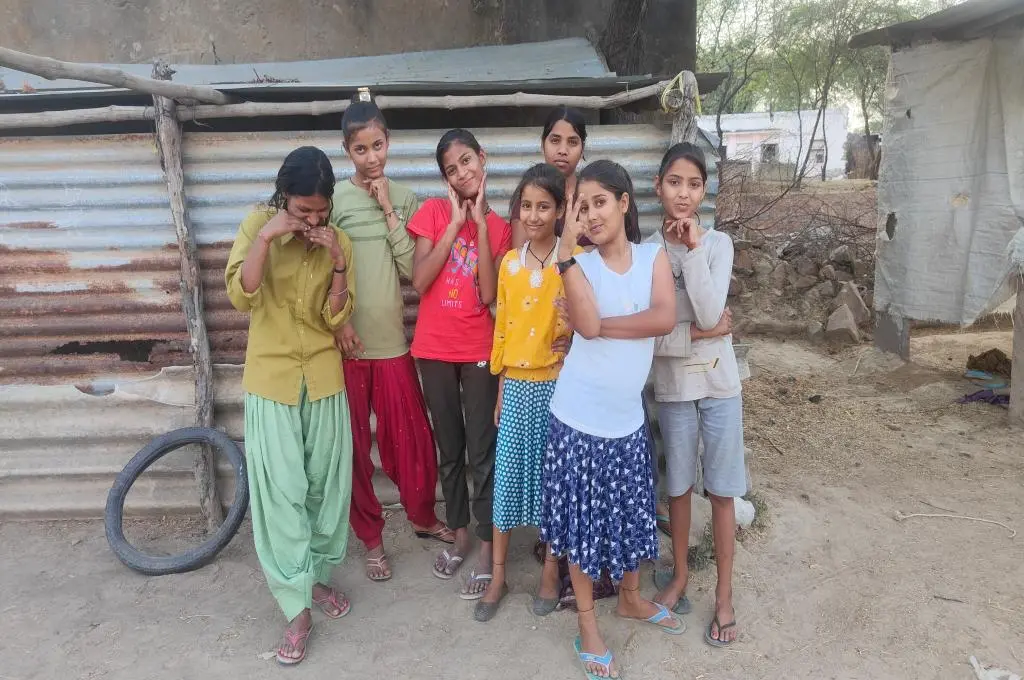Ulka Kelkar is the director of the climate programme at World Resources Institute (WRI) India. She is an economist with two decades of experience in climate change research, capacity building, and outreach. Prior to her time at WRI India, Ulka worked as a consultant climate assessment specialist for the Asian Development Bank (ADB) and as a research fellow with The Energy and Resources Institute (TERI) and Ashoka Trust for Research in Ecology and the Environment (ATREE).
In this conversation with IDR, Ulka shares her key takeaways from COP 26, whether the Glasgow Climate Pact accommodates the needs of countries most vulnerable to climate change, and what India’s next steps should be.

What are some highlights from this year’s COP?
This year’s COP 26 summit in Glasgow had quite a dramatic and busy lead-up. The G20 Summit was held in Rome just before the Glasgow COP. The COP itself started with a World Leaders Summit in which the Indian prime minister announced India’s new climate targets. This was followed by two weeks of technical negotiations on the rules of the Paris Agreement, some of which had been pending since 2016. One of these was related to the rules of international carbon trading or carbon markets. And the reason these took so long to finalise was that while countries realised carbon trading is a nice instrument to introduce flexibility into the whole business of emissions reduction, you cannot have very lax rules. For instance, both the buyer country and the seller country should not be able to claim credit for the same emission reductions. Thus, it’s important to have the rules working well, so that the carbon market delivers emissions reductions over and above what could have been achieved.
There were also a couple of other really big takeaways. Since the IPCC report that came out earlier this year and various extreme weather events that have occurred around the world, there is a growing sense of urgency about combating climate change. But the COP process, this multilateral process under the United Nations umbrella, by its very design, its very nature, is a very slow, lumbering sort of process. You need all the countries in the world to agree to every word; you meet only once a year, and in a pandemic year, even that didn’t happen. But during COP 26 governments agreed to come back in 2022 with stronger actions and introduced a faster review process to take stock of progress. This should provide more frequent opportunities for course correction.
For the first time, there was a reference to phasing down coal power.
The Glasgow Climate Pact, adopted at the end of COP 26, also introduced a new commitment to phase out inefficient fossil fuel subsidies. This recognises the fact that even as countries invest in clean energy, many continue to put in a lot of money into propping up the fossil fuel industries. Also, for the first time, there was a reference to phasing down coal power, and this was quite important. In a sense, this is almost like a signal, putting a writing on the wall, that eventually we must move away from fossil fuels.
There were also a couple of big takeaways from outside the COP negotiations. One thing that I think a lot of people might not have noticed is that the International Monetary Fund (IMF) has created a USD 50 billion fund, out of Special Drawing Rights, a currency called SDRs, and has allocated it to build climate resilience in the poorest, most vulnerable countries. Often international climate finance is given to these countries in the form of loans, and they also take loans to build infrastructure. In the last two years when the entire world was hit by the pandemic, these countries were also hit by a number of climate disasters, like storms. As they tried to recover and rebuild, they’ve had fewer resources available to invest in adaptation to climate change and they got even deeper into debt, which was made worse by these kind of climate loans. In recognition of this growing climate debt, and this double whammy that these countries are facing—having to recover from the pandemic and from the economic recession while facing natural disasters—this new infusion of capital into the system has been introduced by the IMF.
Shipping and aviation are particularly important, because their emissions don’t get counted in the national accounts of any one country.
Another important announcement that was made was for something called the First Movers Coalition, which involves industries where it is especially difficult to reduce emissions, such as shipping, aviation, the buildings and the cement industry, the steel industry, and the long-distance trucking industry. Here, I think shipping and aviation are particularly important, because their emissions don’t get counted in the national accounts of any one country. So it’s important to have something outside the COP, and bring this sector too into the purview of emissions reduction. Overall, these are the different types of progress that happened in this COP.
Talking about countries most vulnerable to climate change, according to you, did COP 26 make space for these countries in dialogues and discussion? Could you talk about what some of their asks were and whether the Glasgow Climate Pact has managed to come through on them?
I think in the context of the most vulnerable countries, the former president of Ireland, Mary Robinson, rightfully said that they are the conscience of the COP; they are the ones who bring the urgency to the discussions.
For years they have been saying that to them, 1.5 degrees Celsius and 2 degrees Celsius is not a minuscule, academic difference—it’s the difference between life and death. The importance of trying to limit global warming to 1.5 degrees Celsius has been duly recognised in this COP.
The second issue is that of climate finance, specifically for adaptation. Climate finance tends to go more towards actions like renewable energy, which is becoming competitive and yields good returns for investors. But when it comes to actions in the health sector, in the water sector, or in the agriculture sector, these don’t pay quick returns to investors, and typically involve a large number of dispersed beneficiaries. So adaptation finance in these sectors always suffers. And right now, it’s only a quarter of the total climate finance that is coming from developed countries to developing countries. Even the total amount is not much because it was supposed to be a flow of USD 100 billion a year, and as I mentioned earlier, it often comes in the form of loans, making these vulnerable countries go deeper into debt. In this particular COP, developed countries have pledged to double the amount of climate finance specifically for adaptation.
Loss and damage has always been a very contentious issue in the COP, because it could set a precedent for legal liability.
The third, and really the most difficult, issue is that of what is called loss and damage—loss of lives and damage to property as a result of climate events that are already becoming more frequent or more intense because of the greenhouse gas emissions that have been added to the atmosphere over the last hundred years or more. Loss and damage has always been a very contentious issue in the COP, because it could set a precedent for legal liability. So anybody could sue a government or a company, saying it’s because of your greenhouse gas emissions that there is a more intense storm in my country and people have lost their lives. Which is why there was always a great resistance from rich countries to incorporating loss and damage within these negotiating texts. But for the first time, it has got its rightful place as a separate section in the Glasgow Climate Pact. What many countries were hoping for was a tangible facility with dedicated funds for loss and damage, in addition to the adaptation finance that we talked about. This COP stopped a little short and instead introduced a series of dialogues and a process to provide this finance. Outside the negotiations, the government of Scotland started things off by contributing two million pounds to loss and damage; the Wallonia region of Belgium has put in a certain amount, and a number of philanthropies put in USD 3 million more. So I definitely think that there is a certain momentum building about the specific needs of the most vulnerable countries.

Coming to India’s statement of achieving net zero emissions by 2070—could you talk a little bit about what that means? And what do you foresee as the next steps?
Net zero by 2070 seems like a very distant target. But India’s net zero target is accompanied by very ambitious 2030 targets. The prime minister of India announced five targets—four of these are related to 2030 and the fifth relates to 2070. These 2030 targets basically focus on a massive scaling up of renewable energy in the next nine years alone, and will lead to a kind of decarbonisation of the economy. These targets will focus on making our non-fossil fuel electricity capacity go from around 150 gigawatts to 500 gigawatts in just nine years, which will have repercussions for other sectors as well—because if you have electric vehicles, they can run on cleaner electricity. If you have the industry electrifying more of its processes and using more hydrogen in the next decade, that electricity and that hydrogen will also come from cleaner sources. So by cleaning up our electricity mix, we’re eventually cleaning up other sectors of the economy as well. Compared to the industrialised economies of the West, we still need to meet the growing energy needs of a developing economy. What we’re promising, though, with all of these targets is that we will cut 1 billion tonnes of CO2 between now and 2030 and that we will improve the greenhouse gas intensity of our GDP from 33 to 35 percent, to 45 percent. What this means is that even though we will continue to grow our economic production, we will grow more cleanly.
All of these targets taken together effectively mean that emissions from our power sector will not grow rapidly even as we continue to provide more power for our growing energy needs. That is a pretty unprecedented thing for a country at our stage of development. It’s actually going to be quite a grand experiment because we don’t have any role model for this. A lot of things will need to fall in place—institutions, policies, land, community participation. All these things will have to be done in a very responsible way to make sure that we meet both our global environmental commitments to the world community as well as the livelihood needs of our population.
Was there anything you were disappointed with at this year’s COP?
You know, I don’t expect big successes from conferences of this nature. But definitely, on climate finance, it was very disappointing because even a few days before the COP, we were expecting a delivery plan from the countries. And when the finance delivery plan came, it basically said, sorry, we’re going to fall short; we’ll try to make up for it by 2023, but we’re not going to be able to meet it. So yes, it continues to be a perpetual disappointment.
I strongly believe that young people should not lose hope.
But I would actually concentrate more on the positives, not to put a positive spin on it, but because I really believe this is where the action is. The COP, after all, is a meeting of governments, but a lot of the signals that have come from the COP are going to play out at many different levels. Indian states and cities will now also be able to make their own plans for how India can urbanise in a way that’s climate friendly. The recent flooding events that we’ve seen, for instance, are a combination of climate extremes and infrastructure choices. If instead of urban sprawl, we can look at better provision of transportation and other urban services, we can then also look at development in a new, improved way. On the corporate side, Indian industries will now be held to the same standards as European companies or American companies. And if they want to compete in the global market, they will also need to introduce low-carbon technologies and policies. Moreover, now that the rules of carbon trading are finalised, India can also create a domestic carbon-trading market. We already have an energy-trading market, but we can extend that to carbon and link it with the existing carbon markets in Europe or elsewhere. So I think there will be a lot of action that we will see in the next few years, and this COP will have some far-reaching effects, despite the fact that the process seems very slow and bureaucratic.
I strongly believe that young people should not lose hope. A lot of things are happening in the COP, outside the COP, and on the ground. And there is a role for each of us to play. Somebody once said that change happens slowly, and then all at once. Perhaps we’re now in the slow phase of change, and then all at once there will be more dramatic transitions in various sectors of the economy.
—
Know more
- Watch the full video of the interview with Ulka Kelkar here.
- Read this article to understand why climate finance for developing and poorer countries is crucial at COP 26.
- Understand how COP shapes global climate policies and what it means for India’s social sector.
- Learn more about India’s climate targets here.





